|
|
|||
|
(Back to Preceding Week; on to Next Week) |
|
WINTER VAGRANT Here in the eastern U.S. (and southern Canada) the only breeding species of hummingbird is the Ruby-throated, Archilochus colubris, so it was the ONLY hummer species we were likely to see from late March through mid-October. Historically, however, there have been sporadic but verified reports of hummingbird in midwinter, and those turned out NOT to be ruby-throats. Rufous Hummingbirds--far away from their traditional wintering grounds in central Mexico--were reported from coastal South Carolina as far back as the early 1900s, but such birds were seen only a few times each decade. In about 1990 several western hummingbird species suddenly began showing up regularly at many locales east of the Rockies--so much so that these days winter vagrants are much less rare. The causes of this apparent population explosion are not well understood, but climate change, habitat alteration, and a near-logarithmic increase in hummingbird feeders have likely played roles. (We might add Internet-enhanced communication has also been a factor in allowing folks to learn about and report vagrant hummers.) Amazingly, the Carolinas now have 11 different vagrant hummer species on their combined list--10 for North Carolina and seven for the Palmetto State--almost all of which have showed up in winter long after our breeding ruby-throats have bailed out for the warmth of Mexico or Central America.
All text & photos © Hilton Pond Center Since 1991 we've banded nearly 70 vagrant hummers in the Carolinas--including two Rufous Hummingbirds here at Hilton Pond Center--so we weren't surprised in December 2008 to hear of a Rufous coming to a feeder east of Charlotte NC in Matthews, about 40 minutes away. The bird was at the home of Carol Buie-Jackson, president of HAWK (Habitat and Wildlife Keepers), an affiliate of the North Carolina Wildlife Federation. Everyone's Christmas schedules precluded a banding trip to Matthews in December so we made tentative plans to visit Carol's place in early January, a delay we thought would be okay since the bird was feeding quite regularly. In the meantime, Carol mentioned her Rufous Hummingbird to the folks at Backyard Wild bird feeding store in Matthews and was surprised to learn Jim Jiles, who lives just two houses down the street from Carol, had also reported a Rufous at his feeders. It seems Carol and Jim had joint custody of this winter visitor and the Rufous was partaking of sugar water at both residences.
We arranged with Carol for a January visit to Matthews and she, in turn, talked with Jim; together they decided his house would be the better trapping site because his feeders were on an easily accessible back porch. After we finalized plans, Carol also contacted Janet Denk (above left) of The Matthews Record and Melinda Johnson (above right) of The Charlotte Observer to invite them to cover our banding of the winter vagrant Rufous. We arrived at Jim's place at about 8 a.m. on 9 January 2008, a bit later than we usually try to capture winter hummingbirds. (We're most successful when we arrive before dawn in time to catch a hummer on its first feeder visit after fasting all night.) As usual we took down all Jim's feeders--Carol had taken hers in the night before--hung our portable hummingbird trap, placed a feeder inside, set the trap, and retired to the warmth of Jim's dining room from which we could comfortably watch for the hummer's approach. Meanwhile, Carol and the two newspaperwomen arrived, filled with anticipation and lots of questions. By 8:20 a.m. it was merely a matter of waiting on the hummer and responding to perceptive, rapid-fire inquiries we were happy to answer.
All text, charts & photos © Hilton Pond Center Everyone noticed Jim's special attire for the occasion--an incredibly bright orange T-shirt (above right) he said was guaranteed to attract a similarly colored Rufous Hummingbird. You'll note the outfit worn by Carol (above left) was more subdued. Jim was true to his word--and shirt--and at 8:35 a.m. the hummer put in a first appearance. As often happens, the bird tried to get at the feeder but couldn't quite figure at first how to enter the trap.
The bird investigated this new contraption from several angles, often flashing the bright rusty feathers at the base of its tail (above) and eventually disappearing. A few minutes later it returned from a different direction--one that allowed a better view of the feeder inside. It wasn't long before the Rufous--by now nicknamed "Rusty"--flew straight through the open trapdoor to begin feeding. A millisecond later we grabbed our remote transmitter and flipped a switch that pulled a pin that allowed the door to slide shut behind the hummer. Success in 18 minutes!
We invited everyone onto Jim's porch to watch as we carefully removed the hummingbird from our trap. The bird wasn't particularly jumpy, so it was easy to grasp the hummer gently and bring it inside to the temporary banding table we had set up in Jim's dining room. After showing our catch to all the onlookers, we inserted the hummer's bill into the port of a feeder Jim had placed on the table; as typically happens, the bird drank freely--an indication, we believe, it was under little stress from the experience.
All text & photos © Hilton Pond Center We secured the tiny hummer by sliding it into a paper tube that allowed us to weigh it accurately and hold it safely for other measurements and the banding process itself. We noted this bird had 13+ iridescent red-orange feathers on the left side of its throat (see top photo)--NOT an indicator of a Rufous Hummingbird's sex. Although only male Ruby-throated Hummingbirds have metallic gorget feathers, female Rufous typically have several. However, the large amount of rust in the tail (above) and on the bird's otherwise green back indicated this was a juvenile male--which we then confirmed by measurements. (Females are somewhat larger in all regards, and they don't get rusty back feathers.) The bird we had just trapped was well on his way to developing a full iridescent gorget and a completely rust-colored head and body--tell-tale signs of the adult male Rufous he would become in time for the next summer season on his breeding grounds.
All text & photos © Hilton Pond Center Incidentally, there was always the possibility our western vagrant could have been an Allen's Hummingbird; this much rarer western vagrant resembles a Rufous except the adult male Allen's usually has a green back. More important, the outer tail feathers of an Allen's are very narrow (less than 3.3mm) while those on our Matthews bird were quite wide at 3.8mm. There was no doubt this was a young male Rufous Hummingbird, Selasphorus rufus, in its second year; i.e., it had hatched in 2008 somewhere in the northwestern U.S., western Canada, or southern Alaska.
All text & photos © Hilton Pond Center During the whole ageing-sexing-measuring-banding process we carefully monitored the hummingbird, and several times we tried to feed it sugar water; in every instance it lapped up the sweet juice, so it certainly wasn't going hungry. Just prior to release we applied band number Y14971, took numerous photos of the bird--and its admirers--and then allowed each observer to hold the bird briefly. Penultimately Jim placed the bird in his open palm (above) and watched in amazement as the bird stared back, seemingly undisturbed by the whole scenario. In the end we moved the hummer to Carol's outstretched hand but by then the Rufous Hummingbird showed it was ready to go by zipping straight up into the tallest tree it could find. Our thanks to Carol Buie-Jackson for contacting us about "her" winter Rufous Hummingbird, and to Jim Jiles for allowing us to trap "his." We suspect the mutual interest of these two hummer enthusiasts will assure "Rusty" has all the fresh sugar water he wants until departing the Matthews area, probably sometime in late winter or early spring.
Vital Statistics for All text & photos © Hilton Pond Center
Comments or questions about this week's installment?
Thanks to the following fine folks for recent gifts in support of Hilton Pond Center for Piedmont Natural History and/or Operation RubyThroat: The Hummingbird Project. Your tax-deductible contributions allow us to continue writing, photographing, and sharing "This Week at Hilton Pond." (Please see Support if you'd like to make a gift of your own. You can also contribute by ordering an Operation RubyThroat T-shirt.)
"This Week at Hilton Pond" is written & photographed You may wish to consult our Index of all nature topics covered since February 2000. You can also use our on-line Hilton Pond Search Engine at the bottom of this page. For a free, non-fattening, on-line subscription to |
|
Make direct donations on-line via
Network for Good: |
|
|
Use your PayPal account
to make direct donations: |
|
|
If you like to shop on-line, you please become a member of iGive, through which more than 750 on-line stores from Barnes & Noble to Lands' End will donate a percentage of your purchase price in support of Hilton Pond Center and Operation RubyThroat. For every new member who signs up and makes an on-line purchase iGive will donate an ADDITIONAL $5 to the Center. Please sign up by going to the iGive Web site; more than 200 members have signed up to help. It's a painless, important way for YOU to support our on-going work in conservation, education, and research. |
|
|
SPECIES BANDED THIS WEEK: * = New species for 2009 WEEKLY BANDING TOTAL 6 species 69 individuals YEARLY BANDING TOTAL (2009) 7 species 93 individuals 28-YEAR BANDING GRAND TOTAL (since 28 June 1982) 124 species 51,975 individuals NOTABLE RECAPTURES THIS WEEK (with original banding date, sex, and current age) Brown-headed Nuthatch (1) 08/28/08--2nd year unknown Chipping Sparrow (1) American Goldfinch (1) Eastern Tufted Titmouse (2) House Finch (2)
|
OTHER NATURE NOTES OF INTEREST --This week brought a nice assortment of recaptured birds (see list at left), including an aging American Goldfinch banded back in 2005 and now in its sixth year. Equally interesting were a Chipping Sparrow, Eastern Tufted Titmouse, and House Finch, all banded as recent fledglings at the Center. These retraps provide good data about species longevity but even more about site fidelity. Such information simply isn't available for wild birds by any other means except banding and subsequent encounter. VAGRANT HUMMINGBIRDS For more information about winter hummers and how to care for them, see our page on Vagrant & Winter Hummingbird Banding.
|
|
|
|
(Back to Preceding Week; on to Next Week) Up to Top of Page Back to This Week at Hilton Pond Center Current Weather Conditions at Hilton Pond Center |
 You can also post questions for The Piedmont Naturalist |
Join the |
Search Engine for |
|
|
Brother hl 4070cdw


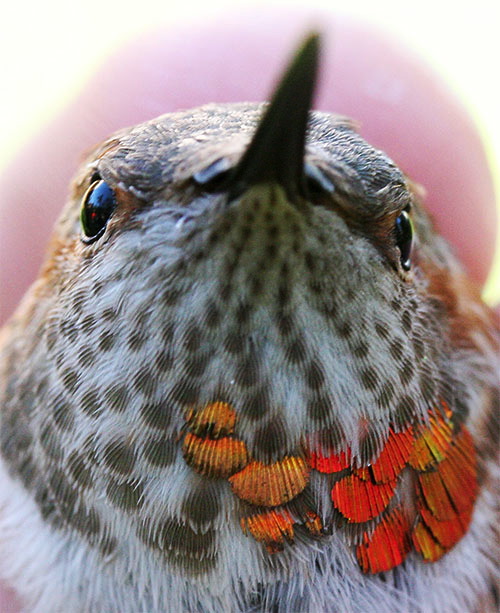
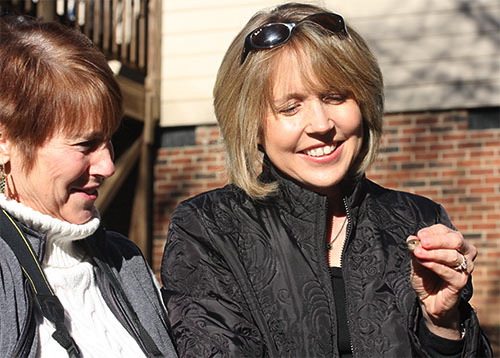
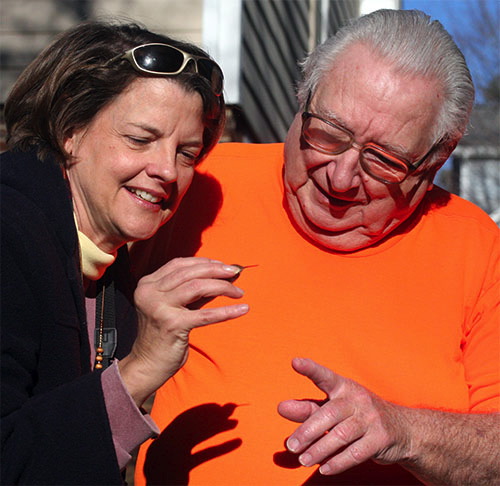


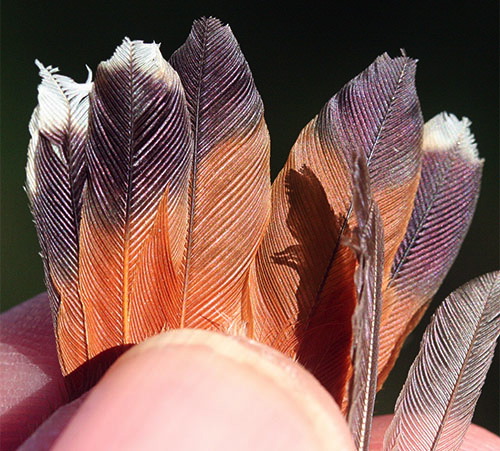
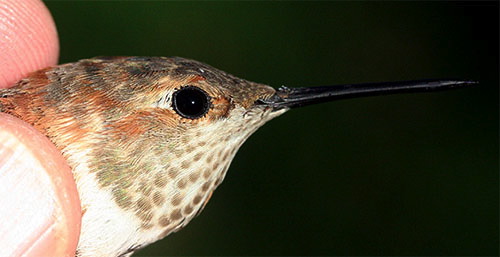



 Oct 15 to Mar 15:
Oct 15 to Mar 15: